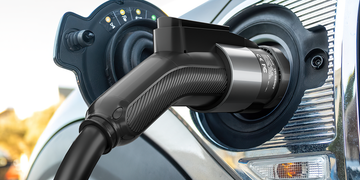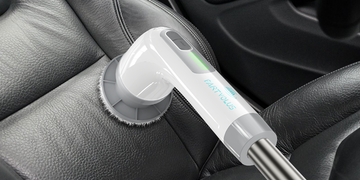AC Charging vs. DC Charging: What’s the Difference? In the realm of electric vehicles (EVs) and the ever-evolving landscape of charging technology, understanding the difference between AC (alternating current) charging and DC (direct current) charging is essential. Each method has its own advantages and use cases, contributing to the flexibility and efficiency of the charging infrastructure for electric vehicles.
AC Charging: Powering Up at Home and Work
1. Overview:
AC charging is the most common method used for charging electric vehicles at home, in workplaces, and at public charging stations. It is the type of electricity that we use in our homes for everyday appliances.
2. Voltage and Amperage:
AC charging typically involves standard household voltage, commonly 120V or 240V.
Charging power is measured in kilowatts (kW), and it is influenced by the combination of voltage and amperage.
3. Charging Speed:
AC charging is generally slower compared to DC charging. Charging times depend on the power rating of the charger and the vehicle's onboard charger capacity.
4. Suitable for:
Residential charging stations
Workplace charging stations
Public charging stations for slower, overnight charging
5. Onboard Charger:
Electric vehicles that rely on AC charging have an onboard charger responsible for converting AC power to DC power, which is used to charge the vehicle's battery.

DC Charging: High-Speed Charging On the Go
1. Overview:
DC charging is designed for high-speed charging, making it ideal for long-distance travel and situations where quick charging is crucial.
2. Voltage and Amperage:
DC charging involves higher voltage, often above 400V, and higher amperage than typical household AC power.
3. Charging Speed:
DC charging provides significantly faster charging speeds compared to AC charging. It can deliver a substantial amount of power to the vehicle's battery in a relatively short amount of time.
4. Suitable for:
Highways and long-distance travel
Locations where quick turnaround times are essential
5. Onboard Charger:
Vehicles using DC charging often have a larger and more powerful onboard charger to handle the higher charging speeds. Some vehicles may even bypass the onboard charger altogether, allowing direct DC-to-battery charging.
AC Charging vs. DC Charging: What’s the Difference?
Differences between AC and DC chargers
AC chargers for EVs are similar to AC chargers for other devices.
An AC charger uses a sine waveform to deliver power to the electric vehicle battery.
The voltage used for an AC charging station is typically between 110-240V, depending on the country and electrical standards.
This is relatively slow compared to a DC charger, with charging times ranging from a few hours to days, depending on the battery's capacity.
Because of this, AC charging is also known as slow or trickle charging.
AC chargers deliver power to the EV's onboard charger, which then converts AC power to DC power that can be used by the EV battery.
AC chargers are typically used for home charging and can often be plugged directly into a regular household outlet.
Meanwhile, DC charging stations are significantly faster and more efficient than AC chargers.
DC fast charging uses a constant waveform to deliver power to the electric vehicle's battery.
Unlike an AC charger that needs an on-board charger to convert AC power, a DC charging station already has a converter inside, which allows it to deliver energy directly to the car batteries, effectively increasing the charging speed.
The voltage used for DC fast chargers is typically between 400-800V, which is significantly higher than the voltage used for AC charging.
This higher voltage allows for faster charging times, with some EVs being able to charge in as little as 20-30 minutes.
Because of the significant amount of power required, DC chargers can only be found in commercial EV charging stations.
Vehicle Compatibility:
Not all electric vehicles support DC fast charging. It's crucial to check the capabilities of your specific vehicle.
AC Charging vs. DC Charging: What’s the Difference? In conclusion, the choice between AC and DC charging depends on your charging needs, the vehicle you own, and the availability of charging infrastructure. As technology advances, we can expect ongoing improvements in both AC and DC charging methods, further enhancing the convenience and accessibility of electric vehicles.





